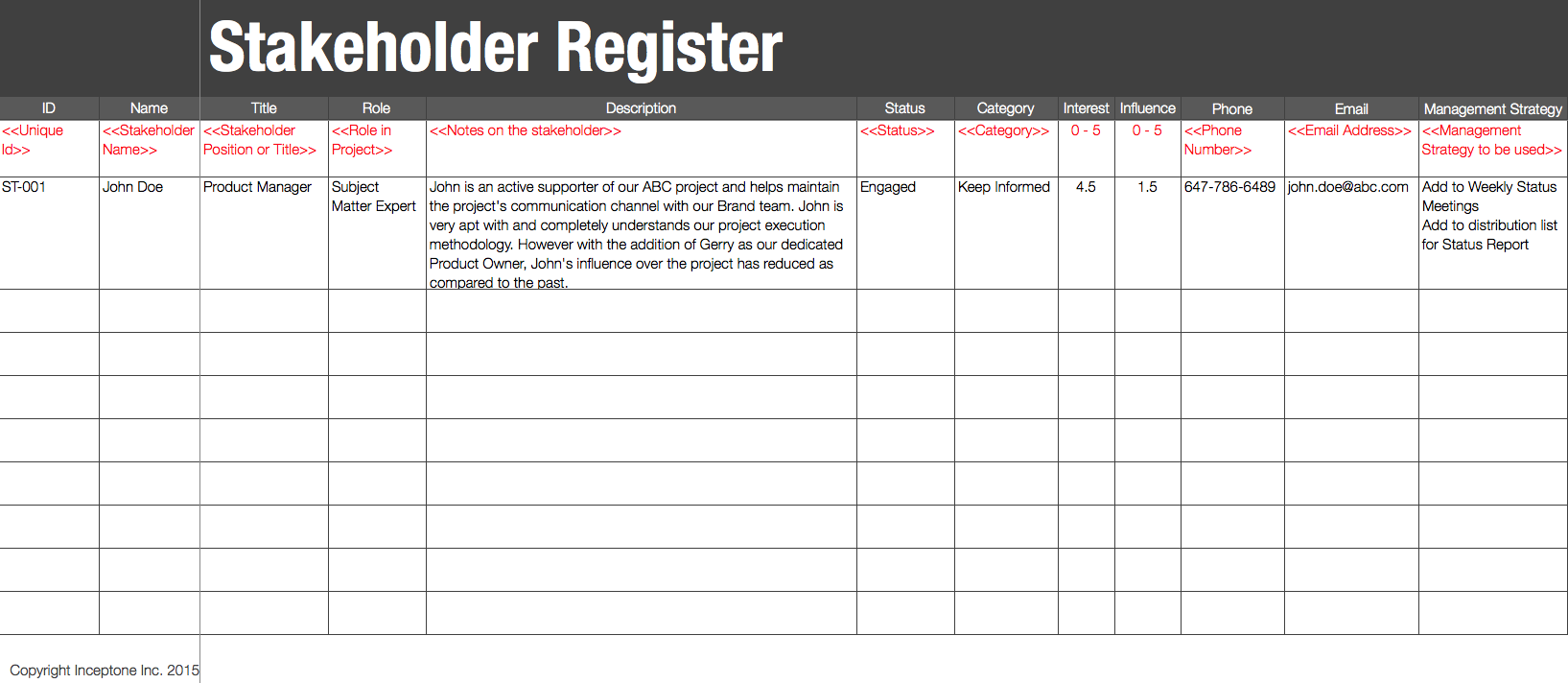Basics of Stakeholder Register
If you look into the archives of the corporate world, you’d perhaps find many projects that succeeded without someone being specifically responsible for project management. However, if you bar the best project manager in the world, managing the easiest project in the world from stakeholder management, it is very likely that the project will fail.
Stakeholder Management is one of the key factors that determine the success of a project. It is that important. Oh, btw delivering a project on time, in schedule, with the whole scope completed does not necessarily mean that the project is considered successful. A project is only successful if the stakeholders consider it successful.
At the heart of Stakeholder Management is an artifact called Stakeholder Register. In this post we'll look at the basics of a Stakeholder Register, its various attributes and its progression through the various steps of stakeholder management.
Primary Goals of a Stakeholder Register
The Stakeholder Register aims to do the following:
Identify and record all the stakeholders related to a project.
Gather relevant information on each of the stakeholders.
Capture derived information based on analysis and categorization of the stakeholders.
Capture management strategies planned for the stakeholders.
Track the status of each of the stakeholders.
Stakeholder Register - attributes
Attributes of a Stakeholder Register
Based on the goals of a Stakeholder Register (as identified above), it is clear that it captures various attributes of a stakeholder through its management process, which may act as inputs to future stages of processing and mitigation of a stakeholder. Thus we need to look at the attributes of a stakeholder (both original as well as derived and assigned ones).
Id - An identifier that uniquely identifies a stakeholder.
Name - Name of the stakeholder.
Title – Stakeholder’s title in the organization.
Role – The role of the stakeholder in the organization.
Description – A detailed description of the stakeholder including his/her interests and needs. This information should help in further planning of management strategies.
Status – The current status of the stakeholder. For instance, “New”, “Categorized”, “Actively Managed” etc.
Category – Categorization of the stakeholder based on things like needs, availability, interest, power etc.
Influence Level – A rating of the influence level that the stakeholder wields on the project. For a simple case, you can use a scale of 0 – 5 (low to high).
Interest Level – A rating of the interest level that the stakeholder has on the project. For a simple case, you can use a scale of 0 – 5 (low to high).
A project contact list is generally maintained separate to the Stakeholder Register. However, it is definitely possible to merge it into the stakeholder register. In that case, the following attributes would get added to the register:
Phone
Fax
Email
Address
Below is a sample Stakeholder Register showing the attributes involved.
Stakeholder Register - Sample
Stakeholder Register - Sample
Not all the attributes of a Stakeholder Register are collected at one time. They get collected and entered into the Stakeholder Register through the various steps of Stakeholder Management. In the next post, we’ll look into how the Stakeholder Register is built by collecting and deriving information through the various steps of Stakeholder Management.

